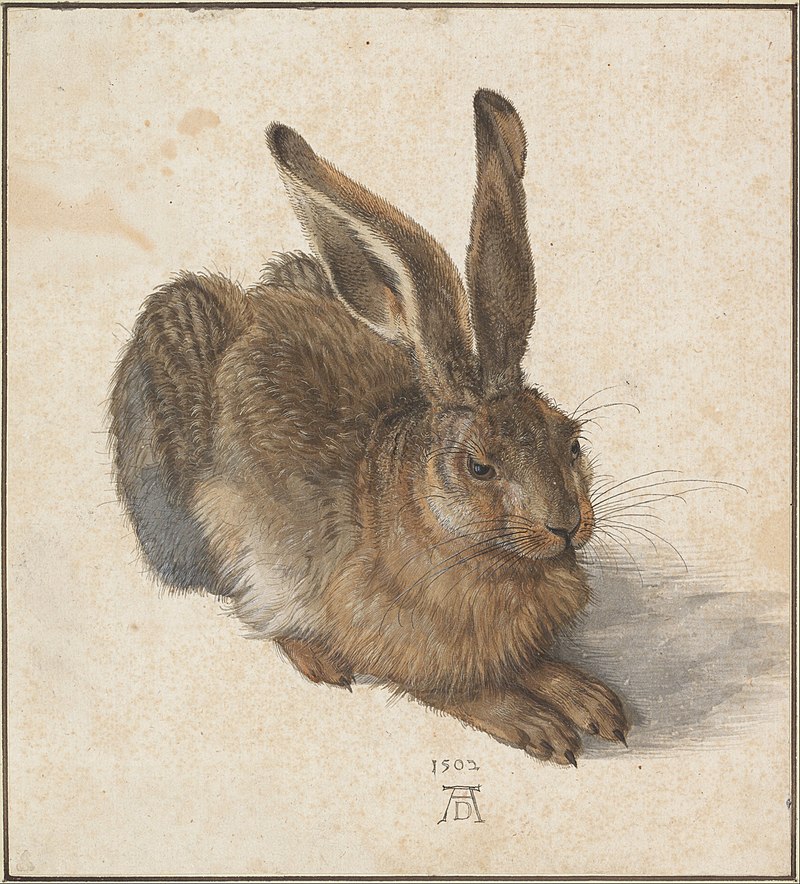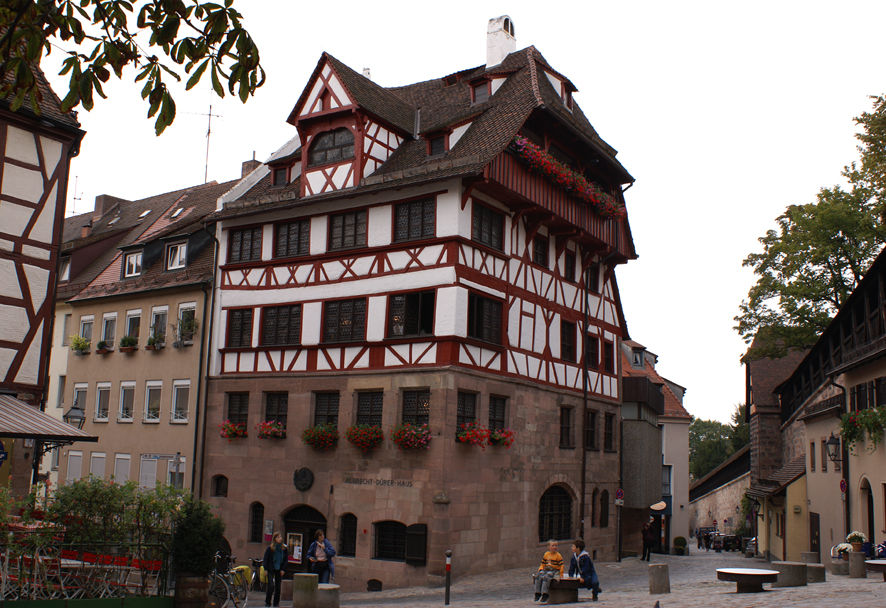Here we have Durer!

One of the interesting things about Durer is the idea of printmaking itself.
Prior to the printing press and the proliferation of books, art was EXCEEDINGLY expensive. It was, quite literally, a luxury product. Really, only a few people could own it, and art was purchased either by the wealthy for their homes, or by groups of people for public display. This is why so much art from the Ancient World through to the Renaissance is either in wealthy homes, temples and churches, or public venues like town halls, guild halls, or places where the group of people who purchased the art can see and show the art to others.
Each painting had to be individually drawn on panels which were individually prepped, and each had to be individually painted. Even with a studio of assistants and apprentices doing some of the less-skilled labor like paint-making, panel-prepping, drawing, storing, under-painting, and cleanup, each painting would take months, and really couldn’t be sped up easily. Even the “lower” quality paintings each studio offered (paintings which were based on a pre-set pattern and worked on by the apprentices and assistants, never the master) would be financially out of reach for most people.

Printmaking changes this completely. Suddenly, an artist can create a single work–the print plate–and create DOZENS of nearly identical works in a matter of minutes.
When I took printmaking classes in college, it could take me a couple of weeks to produce each print plate, but only a few hours to create enough pieces to satisfy my professor’s assigned numbers in the print run. I’m not a professional printer, either artistic or everyday (I’ll be honest, I wasn’t very good at handling the massive manual print machine!) but even that showed me how easily and quickly a professional printer could churn out dozens to hundreds of identical copies of a plate within a day or two. And each print is considered, then and now, an original work of art in its own right.

And just like that, art came to the masses. For a few dollars, you too could purchase and hang art on your walls, just like the wealthy. Durer also painted in watercolors and oils, and traveled Europe to train in different schools, but his prints were the thing that sealed his reputation, in part because so many people could purchase the latest Durer print, even if they couldn’t afford a Durer painting.

By Albrecht Dürer – This file was donated to Wikimedia Commons as part of a project by the National Gallery of Art., Public Domain, https://commons.wikimedia.org/w/index.php?curid=24093762
So enjoy Durer, and look through more of his works, including his luminous paintings. And if you happen to ever pass through Nuremberg, check out his home, now a historic monument and museum.

By Monika Wiedemann (talk · contribs) – Own work, CC BY-SA 4.0, https://commons.wikimedia.org/w/index.php?curid=4050385
